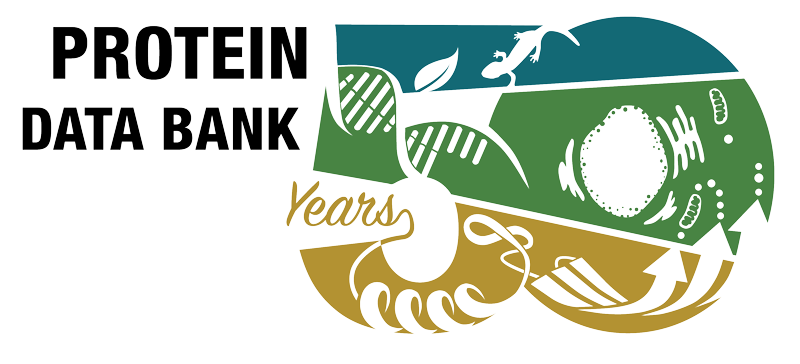Reviews - 1qjq mentioned but not cited (2)
- TonB-dependent transporters: regulation, structure, and function. Noinaj N, Guillier M, Barnard TJ, Buchanan SK. Annu Rev Microbiol 64 43-60 (2010)
- The structural biology of β-barrel membrane proteins: a summary of recent reports. Fairman JW, Noinaj N, Buchanan SK. Curr Opin Struct Biol 21 523-531 (2011)
Articles - 1qjq mentioned but not cited (3)
Reviews citing this publication (35)
- Bacterial iron homeostasis. Andrews SC, Robinson AK, Rodríguez-Quiñones F. FEMS Microbiol Rev 27 215-237 (2003)
- Siderophore-based iron acquisition and pathogen control. Miethke M, Marahiel MA. Microbiol Mol Biol Rev 71 413-451 (2007)
- Bacterial iron sources: from siderophores to hemophores. Wandersman C, Delepelaire P. Annu Rev Microbiol 58 611-647 (2004)
- Interactions among strategies associated with bacterial infection: pathogenicity, epidemicity, and antibiotic resistance. Martínez JL, Baquero F. Clin Microbiol Rev 15 647-679 (2002)
- Microbial iron acquisition: marine and terrestrial siderophores. Sandy M, Butler A. Chem Rev 109 4580-4595 (2009)
- Acquisition of siderophores in gram-negative bacteria. Faraldo-Gómez JD, Sansom MS. Nat Rev Mol Cell Biol 4 105-116 (2003)
- Iron uptake mechanisms and their regulation in pathogenic bacteria. Braun V. Int J Med Microbiol 291 67-79 (2001)
- TonB or not TonB: is that the question? Krewulak KD, Vogel HJ. Biochem Cell Biol 89 87-97 (2011)
- Iron transport and signaling in Escherichia coli. Braun V, Braun M. FEBS Lett 529 78-85 (2002)
- TonB-dependent receptors-structural perspectives. Ferguson AD, Deisenhofer J. Biochim Biophys Acta 1565 318-332 (2002)
- Heme and virulence: how bacterial pathogens regulate, transport and utilize heme. Wilks A, Burkhard KA. Nat Prod Rep 24 511-522 (2007)
- Siderophore-dependent iron uptake systems as gates for antibiotic Trojan horse strategies against Pseudomonas aeruginosa. Mislin GL, Schalk IJ. Metallomics 6 408-420 (2014)
- Metal import through microbial membranes. Ferguson AD, Deisenhofer J. Cell 116 15-24 (2004)
- Fate of ferrisiderophores after import across bacterial outer membranes: different iron release strategies are observed in the cytoplasm or periplasm depending on the siderophore pathways. Schalk IJ, Guillon L. Amino Acids 44 1267-1277 (2013)
- Structure and function of "metalloantibiotics". Ming LJ. Med Res Rev 23 697-762 (2003)
- Metal trafficking via siderophores in Gram-negative bacteria: specificities and characteristics of the pyoverdine pathway. Schalk IJ. J Inorg Biochem 102 1159-1169 (2008)
- Siderophore-drug complexes: potential medicinal applications of the 'Trojan horse' strategy. Górska A, Sloderbach A, Marszałł MP. Trends Pharmacol Sci 35 442-449 (2014)
- Is drug release necessary for antimicrobial activity of siderophore-drug conjugates? Syntheses and biological studies of the naturally occurring salmycin "Trojan Horse" antibiotics and synthetic desferridanoxamine-antibiotic conjugates. Wencewicz TA, Möllmann U, Long TE, Miller MJ. Biometals 22 633-648 (2009)
- FhuA (TonA), the career of a protein. Braun V. J Bacteriol 191 3431-3436 (2009)
- Parasitism of iron-siderophore receptors of Escherichia coli by the siderophore-peptide microcin E492m and its unmodified counterpart. Destoumieux-Garzón D, Peduzzi J, Thomas X, Djediat C, Rebuffat S. Biometals 19 181-191 (2006)
- Antibiotics from microbes: converging to kill. Fischbach MA. Curr Opin Microbiol 12 520-527 (2009)
- The 'liaisons dangereuses' between iron and antibiotics. Ezraty B, Barras F. FEMS Microbiol Rev 40 418-435 (2016)
- The role of bacterial membrane proteins in the internalization of microcin MccJ25 and MccB17. Mathavan I, Beis K. Biochem Soc Trans 40 1539-1543 (2012)
- Characterization of ferric-anguibactin transport in Vibrio anguillarum. López CS, Crosa JH. Biometals 20 393-403 (2007)
- Functionalized nanocompartments (Synthosomes): limitations and prospective applications in industrial biotechnology. Onaca O, Nallani M, Ihle S, Schenk A, Schwaneberg U. Biotechnol J 1 795-805 (2006)
- TonB-Dependent Transporters in Sphingomonads: Unraveling Their Distribution and Function in Environmental Adaptation. Samantarrai D, Lakshman Sagar A, Gudla R, Siddavattam D. Microorganisms 8 E359 (2020)
- An overview of siderophores for iron acquisition in microorganisms living in the extreme. De Serrano LO, Camper AK, Richards AM. Biometals 29 551-571 (2016)
- Natural Trojan horse inhibitors of aminoacyl-tRNA synthetases. Travin DY, Severinov K, Dubiley S. RSC Chem Biol 2 468-485 (2021)
- Outer membrane channels and active transporters for the uptake of antibiotics. Braun V, Bös C, Braun M, Killmann H. J Infect Dis 183 Suppl 1 S12-6 (2001)
- Energization of Outer Membrane Transport by the ExbB ExbD Molecular Motor. Braun V, Ratliff AC, Celia H, Buchanan SK. J Bacteriol 205 e0003523 (2023)
- The Gram-negative permeability barrier: tipping the balance of the in and the out. Maher C, Hassan KA. mBio 14 e0120523 (2023)
- Biosynthesis and Chemical Synthesis of Albomycin Nucleoside Antibiotics. Wang M, Zhang Y, Lv L, Kong D, Niu G. Antibiotics (Basel) 11 438 (2022)
- The chemistry and biology of natural ribomimetics and related compounds. Tsunoda T, Tanoeyadi S, Proteau PJ, Mahmud T. RSC Chem Biol 3 519-538 (2022)
- Location, Location, Location: Establishing Design Principles for New Antibacterials from Ferric Siderophore Transport Systems. Luo VC, Peczuh MW. Molecules 29 3889 (2024)
- Whole-Cell Biosensor for Iron Monitoring as a Potential Tool for Safeguarding Biodiversity in Polar Marine Environments. Calvanese M, D'Angelo C, Tutino ML, Lauro C. Mar Drugs 22 299 (2024)



 PMID:
PMID: 